Infertility Workup
|
| You shall be asked question regarding your health and information obtained through this shall help the doctor in examining you in detail. After examining you and your partner you shall be suggested tests which are required for arriving at a definite diagnosis which may include blood tests, hormone assays, semen examination of the male partner and special x-Rays or doppler examination. Based on the results of these tests you and your partner will be advised the further course of action which may be natural conception under supervision of the specialists or one of the assisted reproductive techniques. If necessary you may also be required to undergo endoscopy or laparoscopy to diagnose or treat the problem. |
|
|
|
|
IUI
|
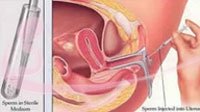 Intrauterine insemination is a procedure that enriches sperm quantity and quality by laboratory methods and includes placement of the same into mother’s womb using a special cannula. The day for this procedure is selected by the doctor after serial ultrasound to determine the most fertile day of your menstrual cycle, semen obtained by the partner is washed to remove impurities and best sperms are selected by laboratory methods to increase the concentration of good sperms capable of fertilizing the ovum. This ensure that a large number of healthy sperms get to reach the ovum thereby increasing the chances of pregnancy. Intrauterine insemination is a procedure that enriches sperm quantity and quality by laboratory methods and includes placement of the same into mother’s womb using a special cannula. The day for this procedure is selected by the doctor after serial ultrasound to determine the most fertile day of your menstrual cycle, semen obtained by the partner is washed to remove impurities and best sperms are selected by laboratory methods to increase the concentration of good sperms capable of fertilizing the ovum. This ensure that a large number of healthy sperms get to reach the ovum thereby increasing the chances of pregnancy. |
|
Intrauterine insemination may be selected as initial fertility treatment by your doctor for the following conditions:
|
- Unexplained infertility
- Idiopathic infertility
- Cervical abnormality
- Sexual dysfunction
- Requirement of donor sperm
- Low sperm count
- Decreased sperm motility
|
|
IVF
|
What Is IVF?
|
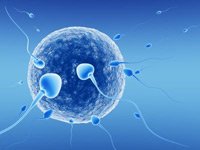 In Vitro Fertilization (IVF) is a process in which the egg is fertilized by sperm outside mother’s womb in strictly controlled laboratory environment which simulates mother’s womb. This process is done in special incubators and embryos are kept there till they are ready to be transferred to mother’s womb.The entire process includes monitoring the women’s ovulation cycle and regulating it by hormones if necessary, picking up the ovum from mother’s ovary under doppler guidance in special IVF operation theater and setting sperm to fertilize it in the adjoining hi tech IVF laboratory, the fertilized egg now called “zygote” is transferred into the uterus. Kilkari Fertility Centre is proud to announce that it is equipped with two of the world’s best incubators so that your embryos get nothing but the best to maximize the chances of pregnancy. Having more than one incubator also helps against even the slimmest chance of machine failure. In Vitro Fertilization (IVF) is a process in which the egg is fertilized by sperm outside mother’s womb in strictly controlled laboratory environment which simulates mother’s womb. This process is done in special incubators and embryos are kept there till they are ready to be transferred to mother’s womb.The entire process includes monitoring the women’s ovulation cycle and regulating it by hormones if necessary, picking up the ovum from mother’s ovary under doppler guidance in special IVF operation theater and setting sperm to fertilize it in the adjoining hi tech IVF laboratory, the fertilized egg now called “zygote” is transferred into the uterus. Kilkari Fertility Centre is proud to announce that it is equipped with two of the world’s best incubators so that your embryos get nothing but the best to maximize the chances of pregnancy. Having more than one incubator also helps against even the slimmest chance of machine failure. |
|
What are the steps involved in IVF ?
|
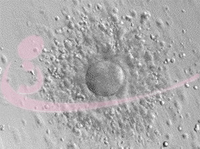
There are five basic steps in the IVF and embryo transfer process which include the following:
- Monitoring and stimulating the development of healthy eggs in the ovaries.
- Collecting the eggs under short anaesthesia.
- Securing the sperm from male partner or the donor as the case be.
- Combine the eggs and sperm together in the laboratory in special solution in completely germ free environment and continue to provide the appropriate environment for fertilization and early embryo growth.
- Transfer these embryos into the uterus by specially designed cannula under ultrasound guidance.
|
|
I C S I
|
What is ICSI?
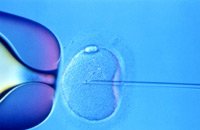 Intracytoplasmic sperm injection (ICSI) is an advanced IVF process in which a selected healthy sperm is injected directly into ovum simulating the natural process but in entirely controlled environment by a very advanced micro injector. Your IVF partner “KILKARI” is equipped with the latest imported ICSI machine with smoothest micromanipulators to ensure gentle handling of the delicate ova and sperm, this brings world class cutting edge IVF treatment to your door steps. We also believe that the man behind the machine is very important and hence the most experienced embryologists complete the procedure. Intracytoplasmic sperm injection (ICSI) is an advanced IVF process in which a selected healthy sperm is injected directly into ovum simulating the natural process but in entirely controlled environment by a very advanced micro injector. Your IVF partner “KILKARI” is equipped with the latest imported ICSI machine with smoothest micromanipulators to ensure gentle handling of the delicate ova and sperm, this brings world class cutting edge IVF treatment to your door steps. We also believe that the man behind the machine is very important and hence the most experienced embryologists complete the procedure.
Why is I C S I Done?
ICSI is typically used in cases of severe male infertility, including:
- Sperm concentrations of less than 15-20 million per milliliter
- Low sperm motility – less than 35%
- Very poor sperm morphology (subjective – specific cutoff value is debatable)
- Having undergone previous IVF with no fertilization – or a low rate of fertilization (low percentage of mature eggs that were fertilized).
- If a man does not have any sperm in his ejaculate, but his testis is producing sperm, these may be retrieved directly through testis or epididymitis. Sperm retrieved thus require the use of ICSI.
- ICSI is also used in cases of retrograde ejaculation, if the sperm are retrieved from the man’s urine.
- ICSI may also be done if regular IVF treatment cycles have not achieved fertilization.
- Sometimes it is used for couples that have a low yield of eggs at egg retrieval. In this scenario, ICSI is being used to try to get a higher percentage of eggs fertilized than with conventional insemination of the eggs (mixing eggs and sperm together).
What is the Procedure for ICSI?
ICSI is done as a part of IVF treatment. ICSI is done in the lab by special ICSI machine.
As with regular IVF, you’ll be given ovarian stimulating drugs, while your doctor will monitor your progress with blood tests and ultrasound. Once you’ve grown enough good-sized follicles, you’ll undergo the egg retrieval, where eggs are removed from your ovaries with a specialized, ultrasound-guided needle.
Your partner will provide his sperm sample that same day (unless you’re using a sperm donor, or previously frozen sperm.)
Once the eggs are retrieved, an embryologist will place the eggs in a special culture, and using a microscope and tiny needle, a single sperm will be injected into an egg. This will be done for each egg retrieved.
|
|
Laser Assisted Hatching
|
Assisted hatching is a technology which helps embryos to attach to the womb of the woman. Pregnancy cannot occur unless the human embryo hatches.
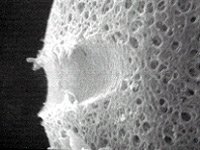
Pregnancy rates for in vitro fertilization procedures with assisted hatching have been shown in some published studies to be higher than for IVF without hatching. There is an improvement in the rate of embryo implantation and pregnancy with the use of assisted hatching.
During the cleavage of the early foetus, zona pellucida hardens. This development is normal and the purpose is to keep the cells in the egg together. Removing the egg for in vitro fertilization and micro insemination takes it out of its natural environment. This procedure tends to lead to egg shells that harden faster those of normally fertilized eggs.
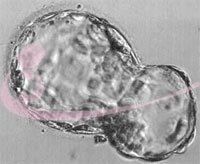 Especially women older than 37 years of age, have a tendency to produce eggs with a harder zona pellucida than younger women. The same goes for women with a high level of follicle stimulating hormone (FSH). This can be diagnosed from a blood sample. Especially women older than 37 years of age, have a tendency to produce eggs with a harder zona pellucida than younger women. The same goes for women with a high level of follicle stimulating hormone (FSH). This can be diagnosed from a blood sample.
The problem of a harder zona pellucida is that the egg may not hatch and thus not attach to the woman’s womb. Hatching of the egg is necessary to become pregnant. We know that eggs from older women have problems hatching, explaining why some older women have problems becoming pregnant.
Laser assisted hatching is one out of several methods to help the fertilized egg hatch and attach to the womb. Other methods are acid or mechanical hatching of one a part of zona pellucida. Laser assisted hatching is a gentle and safe way to weaken a part of zona pellucida. After treating the fertilized egg with laser assisted hatching, we transfer the embryo into the woman’s womb. In most cases the embryo will attach for normal growth and development.
|
|
Cryopresservation
|
Semen
|
| Cryopreservation is a process where cells or whole tissues are preserved by cooling to low sub-zero temperatures, such as 77 K or −196 °C (the boiling point of liquid nitrogen. At these low temperatures, any biological activity, including the biochemical reactions are effectively stopped. This leads to preservation of the sperrms which can be retrieved later using special process. |
|
|
|
Oocytes
|
| Human Oocyte cryopreservation is a new technology in which a woman’s eggs (oocytes) are extracted, frozen and stored. Later, when she is ready to become pregnant, the eggs can be thawed, fertilized, and transferred to the uterus as embryos. |
|
Embryos
|
| Cryopreservation for embryos are used for embryo storage, e.g. when in vitro fertilization has resulted in more embryos than is currently needed then extra embryos may be utilized at a later date. This is one of the most successful cryopreservation techniques. |
|
Donor Program
|
At KILKARI FERTILITY we have donor programs to suite your need
|
 Sperm Donor – may be required for couples where the male partner has no sperms or very low quality sperms. Egg Donor – may be required where the female partner do not produce eggs of their own (Menopause, Premature ovarian failure etc.) or their eggs no longer appear capable of producing a healthy pregnancy. Embryo Donor – may be required where both the partners have infertility. Sperm Donor – may be required for couples where the male partner has no sperms or very low quality sperms. Egg Donor – may be required where the female partner do not produce eggs of their own (Menopause, Premature ovarian failure etc.) or their eggs no longer appear capable of producing a healthy pregnancy. Embryo Donor – may be required where both the partners have infertility. |
|
Pre Genetic Diagnosis and Screening (PGD and PGS)
|
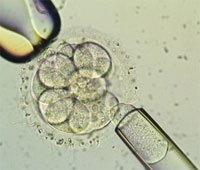 PGD allows the embryologist to choose the best embryos for transfer to the uterus based on the results of a detailed genetic tests on the embryos, excluding those embryos that contain an obvious genetic abnormality. PGD allows the embryologist to choose the best embryos for transfer to the uterus based on the results of a detailed genetic tests on the embryos, excluding those embryos that contain an obvious genetic abnormality. |
|
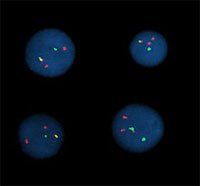 The removed cells can be analysed using the FISH ( Fluoroscent In Situ Hybridisation ) technique to count the number of chromosomes and observe their arrangement. KILKARI FERTILITY is one of the very few centres in INDIA that successfully has the combination of IVF and genetics facilities to perform these sophisticated tests. The removed cells can be analysed using the FISH ( Fluoroscent In Situ Hybridisation ) technique to count the number of chromosomes and observe their arrangement. KILKARI FERTILITY is one of the very few centres in INDIA that successfully has the combination of IVF and genetics facilities to perform these sophisticated tests. |
|
Blastocyst Culture and Transfer
|
| Blastocyst culture and transfer is a newer technique which increases implantation and pregnancy rates as it allows the embryo to grow to a more matured stage in laboratory under controlled environment. Mature embryos have a higher chance of implantation and consecutive pregnancy. |
 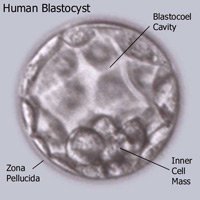 |
|
|
Sonography
|
 We have installed latest GE color doppler system with advanced features and higher resolution to ensure accurate monitoring of endometrium and ovary. This is also useful during IUI to check the position of cannula tip and to perform special tests like sonosalpingography to check patency of fallopian tubes. We have installed latest GE color doppler system with advanced features and higher resolution to ensure accurate monitoring of endometrium and ovary. This is also useful during IUI to check the position of cannula tip and to perform special tests like sonosalpingography to check patency of fallopian tubes.
Kilkari is equipped with a dedicated Ultrasound area with fully motorized couch for doppler examination and IUI so that your position during the test and procedure is most comfortable. Doppler ultrasound examination is done by the treating consultant lady doctor to help in achieving best results due to direct examination.
|
|
Laproscopy & Hysteroscopy
|
 A state of art Operation Theater equipped with the latest machines and endoscopy equipments is ready for perform all kinds of diagnostic, operative and fertility enhancing laproscopic and hysteroscopic procedures. A state of art Operation Theater equipped with the latest machines and endoscopy equipments is ready for perform all kinds of diagnostic, operative and fertility enhancing laproscopic and hysteroscopic procedures. |
|
Karyotyping and Chromosomal Disorder Screening
|
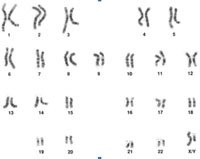 Genes are building blocks of life.You may be suggested to undergo consultation with our genetic counselor and consultants regarding the need for genetic testing in special situations. Genes are building blocks of life.You may be suggested to undergo consultation with our genetic counselor and consultants regarding the need for genetic testing in special situations. |
|